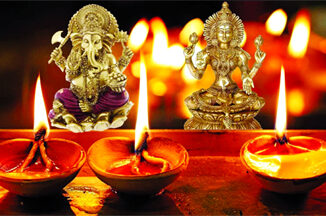
In India‘s vibrant calendar of festivals, Karva Chauth stands out as one of the most intimate and emotionally powerful observances. Celebrated with devotion and grandeur by married women, especially in North India, it is not just a ritualistic fast but a celebration of marital love, faith, and togetherness. With mehendi-clad hands, glowing faces waiting for the moon, and beautifully decorated thalis, the festival is a perfect blend of tradition and romance, handed down through generations.
The Origins of Karva Chauth
The term “Karva” refers to an earthen pot, while “Chauth” means the fourth day, as the festival falls on the fourth day after the full moon in the Hindu month of Kartik. Historically, the earthen pot symbolized prosperity, friendship, and blessings exchanged among women. The origins of Karva Chauth are both social and spiritual. In ancient times, newlywed women, often far from their parental homes, found in this festival a means to bond with others in their marital homes. Exchanging karvas created a sisterhood that became a source of strength and support. Mythological stories also add depth to its significance, such as the tale of Queen Veervati whose steadfast fast restored her husband’s life, and the story of Karva, whose devotion persuaded Yama, the God of Death, to spare her husband. These legends underline the festival’s core themes of fidelity, faith, and love.
Rituals and Traditions
Karva Chauth is marked by meticulous preparations and heartfelt rituals. The day begins before sunrise with Sargi, a pre-dawn meal prepared by the mother-in-law. It includes pheni (vermicelli cooked in milk), fruits, dry fruits, sweets, and snacks, all of which provide energy for the long fast ahead. After this meal, women observe a nirjala fast, refraining from food and even water until the moonrise.
In the evening, women dress in festive attire-often bridal sarees or lehengas in red, maroon, or bright hues-adorned with sindoor, jewelry, and intricate mehendi designs. Groups of women gather with decorated thalis for the Karva Chauth puja, where they listen to the Karva Chauth katha, exchange decorated karvas, and pray together. The sense of community and shared devotion makes this ritual especially meaningful.
The highlight of the festival comes with the moonrise ritual. Women eagerly wait for the moon, and once it appears, they view it through a sieve or chalni and then look at their husband through the same. The husband then offers his wife water and food, breaking her fast with love and tenderness. This moment is the most iconic part of Karva Chauth, symbolizing not just the breaking of the fast but the reaffirmation of marital bonds.
Symbolism and Spiritual Meaning
While Karva Chauth is known for its rituals, its symbolism runs deeper. It is an expression of love and commitment, a form of spiritual discipline, and a testament to female solidarity. For many women, the fast is not merely about sacrifice but about celebrating the sanctity of marriage and demonstrating inner strength.
Regional Variations
Though predominantly celebrated in Punjab, Haryana, Delhi, Uttar Pradesh, and Rajasthan, Karva Chauth takes on different colors across regions. In Punjab, it is marked by grandeur with folk songs and decorated karvas exchanged among women. In Rajasthan, women create clay idols of Gaur Mata and perform unique regional rituals. In Uttar Pradesh and Bihar, the prayers include offerings to Goddess Parvati along with lamps and gifts. In urban India, the festival has evolved into a celebration where many men also fast alongside their wives, symbolizing equality and mutual love.
Karva Chauth in Modern India
In modern times, Karva Chauth has become a blend of tradition and popular culture. Bollywood has played a huge role in popularizing the festival, with films like Dilwale Dulhania Le Jayenge and Kabhi Khushi Kabhie Gham immortalizing its rituals on screen. Social media has added another dimension, with women sharing photos of decorated thalis, mehendi, and moonrise celebrations. While some critics question the gender roles associated with the festival, many couples today reinterpret it as a mutual celebration of love, with both partners participating in the fast.
Fashion, Beauty, and Festivity
Karva Chauth is also an occasion for women to relive the joy of their wedding day. From bridal sarees and lehengas to sparkling jewelry and colorful bangles, the fashion element of the festival is inseparable from its rituals. Mehendi, often with hidden initials of the husband, adds charm, while decorated thalis and festive gatherings create an atmosphere of joy. It is as much about beauty and celebration as it is about devotion.
Karva Chauth endures as one of the most cherished festivals because it is more than just a fast-it is a heartfelt expression of love, devotion, and togetherness. Even as it adapts to modern values and lifestyles, its essence remains intact. The sight of women gazing at the moon through a sieve, followed by the tender moment of breaking their fast with their husbands, captures the enduring beauty of this festival. It is a reminder that in the midst of changing times, some traditions continue to glow with timeless relevance, shining as brightly as the moon that inspires them.





Be the first to comment